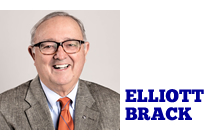By Elliott Brack
Editor and Publisher, GwinnettForum
DEC. 10, 2019 | It was a good one-day trip from Gwinnett. Hearing over and over about how exciting Greenville, S.C., and its downtown area had become, we decided to make a one day exploratory visit, to get a glimpse, and to plan for a longer return trip later on.
 We focused on visiting the Greenville County Museum of Art. So it was two hours (almost exactly) up Interstate 85, two hours at the museum (that was enough, since it’s small), an hour for lunch and drive-through of the Furman University campus, then two hours to return home, all on a crisp and sunshiny day.
We focused on visiting the Greenville County Museum of Art. So it was two hours (almost exactly) up Interstate 85, two hours at the museum (that was enough, since it’s small), an hour for lunch and drive-through of the Furman University campus, then two hours to return home, all on a crisp and sunshiny day.
What makes the museum so well thought of is the quality of the exhibits it has, and its size. It has galleries on three floors, making its size easy to explore, and not so big that it tires you out.
When there, much of the art on display was that of Andrew Wyeth, shown on two of three floors. There were several paintings of his father, Jamie Wyeth, and much of one gallery devoted to the work of Phyllis Mills Wyeth, Jamie’s wife. The museum owns many Wyeths.
Andrew Wyeth did much of his work in realist watercolor and tempera paintings of people and landscapes. It is amazing the way he could control the fluid of his watercolors to create amazing splotches of color in watercolor or tempera, much of it in earth tones. This seems much more difficult than producing artwork in oils, which have a stability of themselves, and more-or-less “stay put” when the artists paints or knifes them on. But watercolor? Just to gaze at the Andrew Wyeth art in watercolor is to stand in awe.
How did Greenville get these exhibits? Greenville has a tradition of philanthropy from its very beginning. There an understanding by wealthy Greenvillians they should fund worthy projects. Early settler Vargry McBee gave land to found four early churches, the Baptist, Methodist, Presbyterian and Episcopal downtown churches! Wow!
McBee also gave land for the Greenville Women’s College (later a seminary) and stipulated that it must always be used for educational purposes. On that downtown land now are several institutions, including the acclaimed museum, library and children’s museum.
Textile money from Holly and Arthur Magill of $750,000 was in a challenge grant to the county to form a museum, which the county matched. And donors have contributed to buy works of famous artists for the museum to own. With few exceptions, most of the art work was purchased with private funding. The museum owns 90 Andrew Wyeth pieces. Some 45 are on display now, with the museum rotating them quarterly in various sized exhibits.
Much of the focus on collecting key artists came from Museum Director Thomas Styron, who had been there 33 years, and wanted to build a live collection, which he bought at auctions, from estates, and artists.
On our visit, the Greenville museum was devoting space in one gallery to four artists of South Carolina. One was David Drake, born in 1801, a slave and a potter who created giant stoneware jugs; the celebrated painter, sculptor and printmaker Jasper Johns, (born in Augusta in 1930, but educated in South Carolina); folk artist William H. Johnson (1901-1970); and the wood sculptor of birds, Grainger McKoy. The museum only shows and collects American art.
If you plan a visit, the museum is normally closed Monday and Tuesday. The museum will soon be doing renovations. Check its web site before going to make sure what you want to see is available. Admission is free.
Thanks, Marcia Bumbalough, of Buford pointing our in a recent edition our mis-identification of birds in a photo. She writes: “Those would be CARDINALS on Frank’s photo, not robins.” We shoulda known.
- Have a comment? Send to: elliott@brack.net










Follow Us